Editor’s note: This article was reviewed for accuracy and updated on 9 September 2024.

The nominal group technique (NGT) is a structured decision-making method used in group settings. Teams can generate ideas, prioritize them, and make collective decisions with the NGT. Key features of the NGT include:
This technique is particularly useful when a group needs to reach a consensus or make a decision about a specific problem. To facilitate an effective NGT, make sure to:
Product managers wear multiple hats at work. One of the tasks we do is facilitate meetings. Everyone appreciates an effective, efficient meeting, and the NGT can help you do this.
So how does the NGT work? The five main steps are:
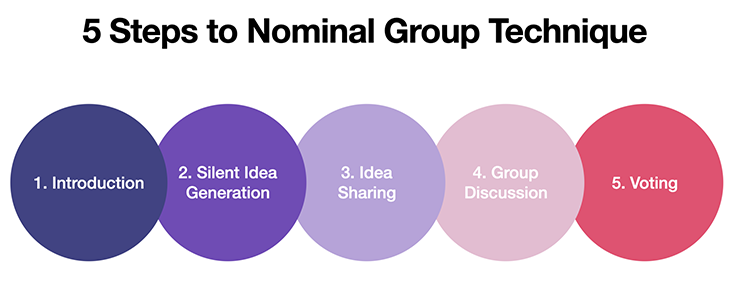
At the beginning of a group meeting, the meeting facilitator states the objective of the meeting and explains the decision-making method used in this meeting — the nominal group technique.
Give a brief introduction to NGT to the group members. Go through the steps and lay out the key activities you are going to do so that the members can have a general idea.
This step may take 5-10 minutes.
Group members brainstorm ideas — the potential solutions to the problem they agreed upon in the previous step — individually.
In this stage, the group members are asked not to discuss with others. We want to ensure that all participants have an equal opportunity to contribute without being influenced by other opinions or ideas.
This step may take 10 minutes.
In this step, every group member shares the ideas they generated in a round-robin fashion. The facilitator records these ideas on a whiteboard (or any collaboration platform the company is using). In this idea-sharing process, the facilitator can group similar or duplicated ideas together.
Note that we don’t judge or debate these ideas at this step. We want to ensure everyone has the same opportunity to speak.
This step may take 15–30 minutes.
After all ideas have been shared, group members discuss to clarify any unclear points or seek additional information. In this step, we discuss for clarification and not for judgment. The facilitator helps avoid criticism and ensures the group doesn’t spend too much time on a single idea.
This step may take 30–45 minutes.
Finally, in the last step, group members vote on the presented ideas. There isn’t a best way to vote or rank, and the key to this step is that it should be conducted in private.
One common approach is to provide each individual with a certain number of votes or points. They can distribute the votes/points among the ideas based on their preference. This helps with prioritization and identification of the most popular or preferred ideas.
Once the voting process is done, the result should be announced to the participants immediately. The voting result also means the meeting reaches a conclusion.
This step may take 5–10 minutes.
NGT is a structured approach that helps prevent dominance by certain individuals, encourages diverse perspectives, and leads to more informed decisions. Its main benefits include its emphasis on equal participation, its prevention of groupthink, and its ability to arrive at an objective consensus.
Let’s go into more detail about these below:
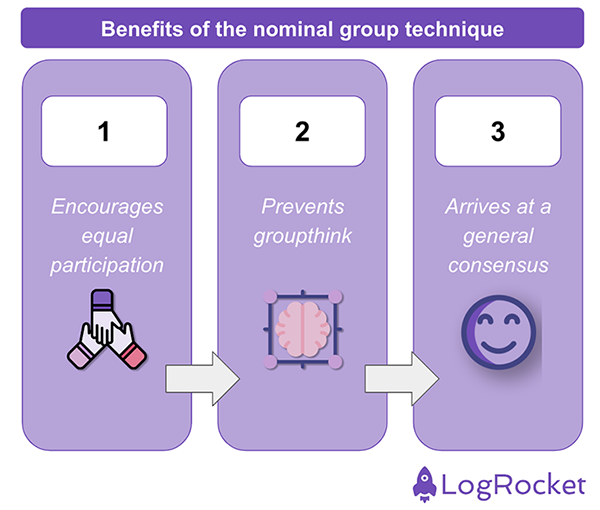
NGT fosters an environment that allows all participants to have an equal opportunity to contribute their ideas. This is especially beneficial for introverted or less vocal individuals who might be overshadowed in traditional group discussions.
Moreover, equal participation also means that diverse perspectives can be seen. This can lead to more well-rounded solutions.
Groupthink is a psychological phenomenon where group members tend to conform to a dominant viewpoint without critical evaluation to avoid conflicts. The silent idea generation step and voting step help reduce the influence of group dynamics.
The voting process facilitates an objective way to prioritize ideas. This can help identify the most preferred ideas or solutions based on the collective preferences of the group.
NGT can be very effective in certain situations. However, it might not be suitable for every decision-making scenario and requires careful consideration:
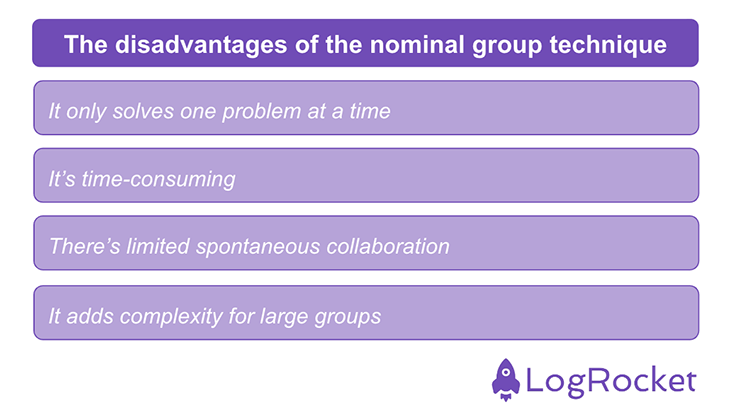
As you may already notice, NGT is structured to focus on one topic at a time. There are two sides to every coin. Dealing with only one problem at a time helps teams focus but the lack of flexibility can also be a major disadvantage to some teams.
NGT involves steps of idea generation, sharing, and voting. Though each step should be timed, the processes can still lead to long meetings. The whole process typically can take 60 to 90 minutes.
The silent idea generation, on the one hand, fosters equal participation. On the other hand, it may limit spontaneous collaboration among participants on the other side. The lack of real-time interaction can restrict some creative ideas that emerge from dynamic discussions.
The ideal group size is around 5–10 individuals. While a larger group can generate more ideas, it can take too long to go through the NGT steps of idea generation, sharing, and voting.
If NGT has to be implemented in the larger group, consider dividing the group into smaller sub-groups to proceed. The smaller groups can bring their top five ideas to the larger groups for further discussion and voting.
Now that we’ve learned the advantages and disadvantages of NGT, let’s further discuss when and in what scenario to use this technique:
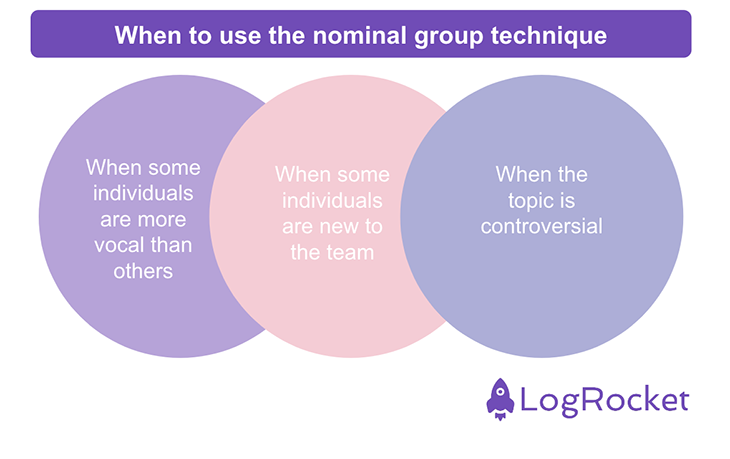
There can be multiple reasons that cause some people to be more vocal than others. For instance, some are more introverted than others, or there’s a power imbalance between members. Regardless, NGT is structured to level out the playing field for diverse group members.
As a new member, sharing ideas with a group of new faces can be daunting. NGT creates a safe space for all participants, including the newbie, to contribute. NGT has a significant advantage in ensuring equal participation.
One trait of NGT is “no criticism.” When the topic is controversial or the conversations are heated, individuals may tend to conform to the major voice of the room so that conflicts can be avoided. The anonymous voting step in NGT helps teams to reach a rational and objective conclusion.
Before we wrap up, let me share some tips and best practices for facilitating a meeting using the nominal group technique.
At the beginning of the meeting, declare the objective of the meeting and the problem the group is going to discuss and solve in this meeting. We want to ensure we have an agreement here to avoid unnecessary inefficiency and potential scope creep.
The process of NGT is simple and intuitive. Let’s keep it simple as it is. Only when the participants understand where they are in the process of the meeting can they follow through and provide their thoughts and knowledge.
NGT provides a structure that helps everyone have a voice in the meeting. The meeting facilitator should strive to provide a feeling of equality among members. This should be done and is easier to do at the beginning of the meeting rather than at the middle or end.
In group meetings, people often get lost in the processes. While you are hosting a meeting, recording the ideas and discussion with some simple graphs or diagrams or simply just writing them down on the screen or whiteboard can be helpful. There are also tons of collaboration platforms to help you visualize your meeting on the screen.
Ultimately, we won’t agree 100 percent of the time, but it is still valuable that group members can feel valued and respected when they are involved in the decision-making process.
The nominal group technique finds a nice balance of group collaboration and individual creativity. It allows all kinds of ideas and perspectives and aims for a genuine consensus.
Featured image source: IconScout
LogRocket identifies friction points in the user experience so you can make informed decisions about product and design changes that must happen to hit your goals.
With LogRocket, you can understand the scope of the issues affecting your product and prioritize the changes that need to be made. LogRocket simplifies workflows by allowing Engineering, Product, UX, and Design teams to work from the same data as you, eliminating any confusion about what needs to be done.
Get your teams on the same page — try LogRocket today.
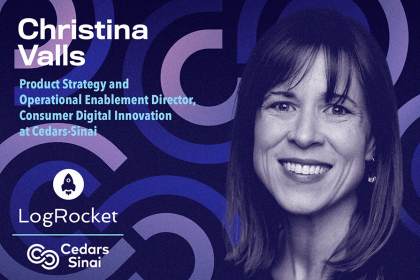
Christina Valls shares how her teams have transformed digital experiences at Cedars-Sinai, including building a digital scheduling platform.

Red-teaming reveals how AI fails at scale. Learn to embed adversarial testing into your sprints before your product becomes a headline.

Cory Bishop talks about the role of human-centered design and empathy in Bubble’s no-code AI development product.

Learn how to reduce mobile friction, boost UX, and drive engagement with practical, data-driven strategies for product managers.